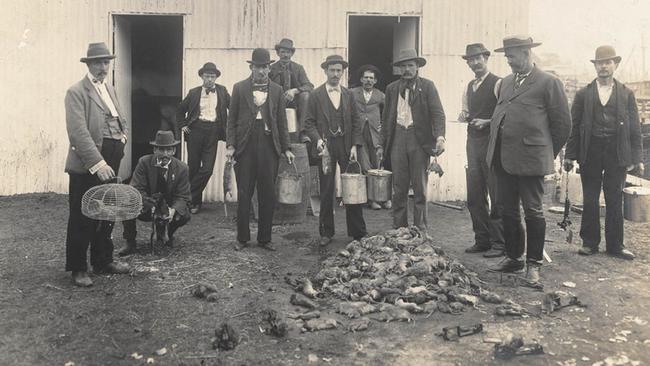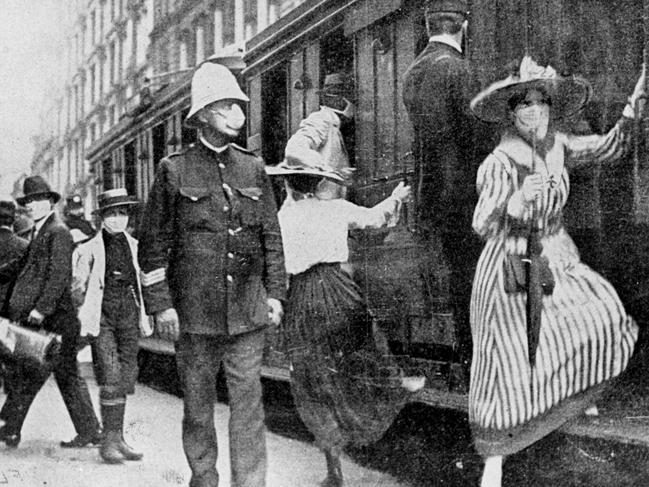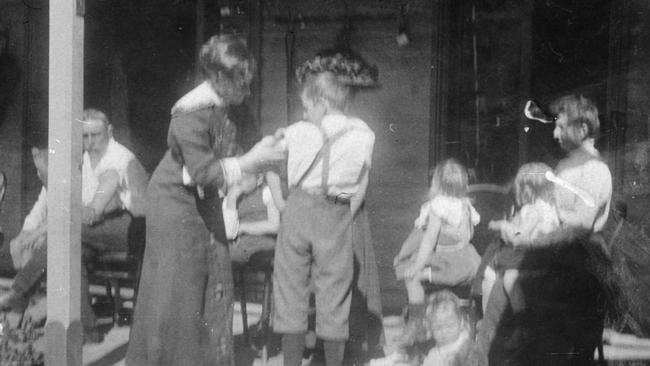Australia’s fight to the death against global disease
As the world lives in dire fear of a global pandemic starting from cases of coronavirus in China, we can still take some lessons from past outbreaks of disease.
Today in History
Don't miss out on the headlines from Today in History. Followed categories will be added to My News.
As the world lives in dire fear of a global pandemic starting from cases of coronavirus in China, we can still take some lessons from past outbreaks of disease.
Not much is known about outbreaks of disease on this continent before 1788 and isolation most likely spared its inhabitants from the ravages of diseases such as bubonic plague which decimated Europe in the Middle Ages.
But, from April to May 1789, an outbreak of smallpox killed between 50 and 70 per cent of the indigenous population around Sydney. Among them was Arabanoo, a Gadigal man who had acted as an interpreter for Governor Arthur Phillip.

Because the incubation period for the disease is only 17 days, it is unlikely that they caught the disease from an infected person on the First Fleet, since there were no recorded cases on the journey of the fleet from England. Phillip blamed the French crew of Laperouse — unlikely given they had left a year prior — but another theory suggests it may have come overland from Indonesia, brought by Macassan fishermen who were known to have visited the Australian mainland before the arrival of the British.
Smallpox would return to haunt the country on several other occasions, including large outbreaks in 1881-82 in which 40 died and again in 1913-17, which killed four but made more than 2000 people ill. The last recorded case was in 1938. After that there has been the occasional scare, such as the 1954 quarantining of the ocean liner Strathaird, filled with British migrants. It was later cleared of any disease.
In 1977 the UN World Health Organisation declared the disease had been eradicated.

The 19th century saw several serious outbreaks of measles in Australia, one of the most severe coming in 1866-67 during which about 8600 cases were reported. There were relatively few deaths but at one time around 80 per cent of children in Sydney alone were affected.
The scarlet fever outbreak of 1875-76 claimed about 8000 lives, but the government took measures, including quarantining patients and putting restrictions on children from infected areas attending school, which limited the impact.
Although not as sudden and virulent as outbreaks of other diseases, Australia has also lived in fear of the creeping menace of tuberculosis. In the late 19th and early 20th century in Australia, special consumptive hospitals included Kalyra in South Australia, Waterfall Sanatorium south of Sydney, Queen Victoria Homes For Consumptives at Wentworth Falls and Melbourne Benevolent Asylum at Heatherton.

In the 19th century as germ theory became more widely accepted, the practise of isolating patients became standard, as did sanitary measures such as cleaning up sewers.
When rats were blamed for spreading bubonic plague in Sydney in 1900, ratcatchers became frontline troops in the war against the disease. The Rocks in Sydney was the first place affected, being so near ships which had been in contact with plague outbreaks around the Pacific and were not subject to quarantine. The slums of The Rocks were swarming with rats and fleas, which loved the steamy, cramped, unhygienic conditions.
Identified victims were taken to North Head Quarantine station, The Rocks precinct was quarantined and rats were hunted by the thousands. The streets of The Rocks were washed with hot water, phenol and covered with lime. Many buildings were destroyed.

In 1890 the Asiatic flu pandemic arrived in Sydney. Thousands of cases were reported and there were 234 deaths reported in Sydney. But a worse case of influenza would come as a result of the disruption caused by World War I, which saw millions of people on the move as troops or refugees. It led to a global outbreak of influenza that became known as the Spanish flu in 1918-19. It was so named because the first outbreaks reported to the public were in Spain, but cases of flu had already turned up in American army camps and there is a theory that it may have started in Austria as early as 1917.

Believed to have been an avian flu passed to pigs and then to humans, the Spanish flu killed about 20-25 million people — far more than were killed in the trenches of World War I. It swept around the world, often killing adults in their prime. The death toll in Australia was about 15,000 people.
Polio also frequently reared its head in this country, with outbreaks in the 19th century and major epidemics in the 1930s to the 1950s. The worst affected were often children, many of them left with degrees of paralysis. The development of polio vaccines in the 1950s reduced the threat.
More recently Australia saw its first cases of HIV/AIDS in the early 1980s, but a major outbreak was prevented by education about how the disease was transmitted.

